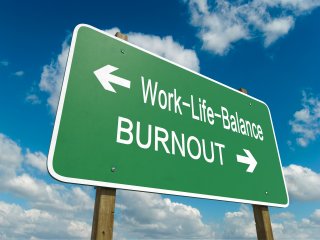Posted August 1st, 2022
By Kris Powers
It’s no secret that Covid changed the world of work for many. There were some who lost their jobs, and others who left of their own accord. Known as the great resignation of 2021, a large number of Americans – over 47 million – voluntarily quit their jobs. And the trend continues in 2022. CNBC recently reported that the Willis Towers Watson’s 2022 Global Benefits Attitudes Survey showed that 44% of employees are “job seekers”.
Pay, health benefits, job security, flexible work arrangements and retirement benefits are the top 5 reasons why employees would move elsewhere. And the desire to work remotely continues to rise. According to Tracey Malcolm, global leader of the future of work and risk at Willis Towers Watson’s, while ″[employers] are revving up a return to onsite [work], I think companies need to be careful what they’re revving up; it may not be the model employees want.”
Currently, 26% of the survey respondents are always or mostly working from home, and another 15% have a hybrid split between home and the office. But the survey showed that many more employees would prefer remote work. The benefits of better management of household commitments, less time commuting, and lower costs are among the three biggest benefits workers cited. But it’s not all rosy – lack of personal interactions, feeling disconnected and the challenge of building relationships with co-workers while working remotely are drawbacks to working remotely.
Forbes Councils Member, Chandran Fernando, recently wrote that as employees are re-evaluating their careers, this provides an “opportunity for employers to do the same, by asking themselves four fundamental questions:
1. What do employees seek in this new work-life balance?
2. How will companies provide what employees need for that balance?
3. What does that new workplace look like?
4. What can employees and employers bring to it?”
The pandemic forced many to work from home remotely – many for the first time ever. After the adjustment came an understanding that perhaps the remote or hybrid situation offered benefits – perks that some employees might not have realized were missing.
Whether working remotely, in a hybrid situation, or at the office; for those seeking a work-life balance, here are some tips from Business News Daily:
1. Accept that there is no ‘perfect’ work-life balance.
“It is important to remain fluid and constantly assess where you are [versus] your goals and priorities,” said Heather Monahan, founder of the career mentoring group, #BossinHeels. “At times, your children may need you, and other times, you may need to travel for work, but allowing yourself to remain open to redirecting and assessing your needs on any day is key in finding balance.”
2. Find a job that you love.
“If your job is draining you, and you are finding it difficult to do the things you love outside of work, something is wrong,” said Monahan. “You may be working in a toxic environment, for a toxic person, or doing a job that you truly don’t love. If this is the case, it is time to find a new job.”
3. Prioritize your health.
“Prioritizing your health first and foremost will make you a better employee and person,” said Monahan. “You will miss less work, and when you are there, you will be happier and more productive.”
4. Don’t be afraid to unplug.
5. Take a vacation.
6. Make time for yourself and your loved ones.
“Realize that no one at your company is going to love you or appreciate you the way your loved ones do,” said Monahan. “Also [remember] that everyone is replaceable at work, and no matter how important you think your job is, the company will not miss a beat tomorrow if you are gone.”
7. Set boundaries and work hours.
One of my biggest struggles with remote work is the feeling that I never officially “leave work”. My laptop is set up in my home office and it’s too easy to pop in to “check email” throughout the evening. Coworkers and clients email and text at all hours, and it’s difficult to not respond immediately. But I urge you to stretch that boundary muscle.
“Whether you work away from home or at home, it is important to determine when you will work and when you will stop working; otherwise, you might find yourself answering work-related emails late at night, during vacations or on weekends off,” said Chris Chancey, career expert and CEO of Amplio Recruiting.
8. Set goals and priorities (and stick to them).
Set achievable goals by implementing time-management strategies, analyzing your to-do list, and cutting out tasks that have little to no value.
Structuring your day can increase productivity at work, which can result in more free time to relax outside of work.
For those who are taking a closer look at their careers, it’s important to take some time to decide what work-life balance means to you. What is missing in your current situation? How will a change remedy that?
It is our goal at Ed4Career to facilitate professional growth by providing high quality curriculum in the areas of career development and personal enrichment. While we can’t do anything to guarantee a better work-life balance, we may be able to help you learn the skills necessary to reduce stress, deal with difficult people in the workplace, or even train online for a new career altogether!
Our courses are open enrollment, meaning that you can start any time that you are ready. Online courses also provide the benefit of being able to complete your coursework anytime, anywhere. Fitting personal enrichment or career





